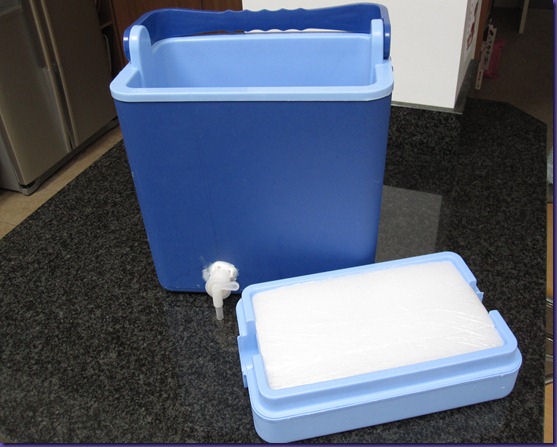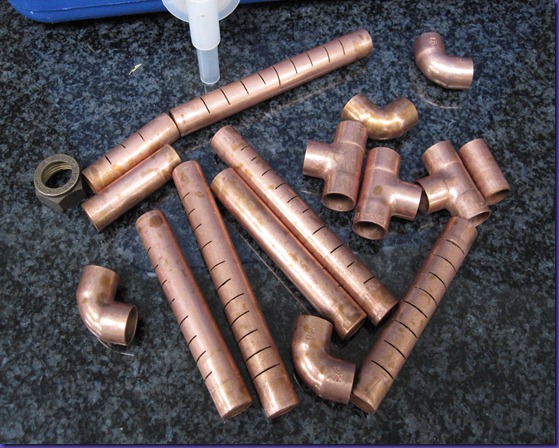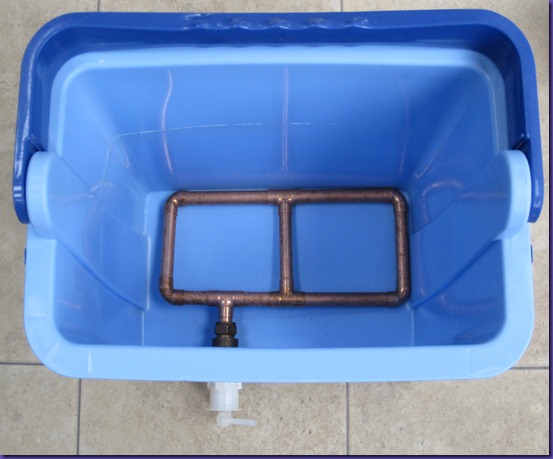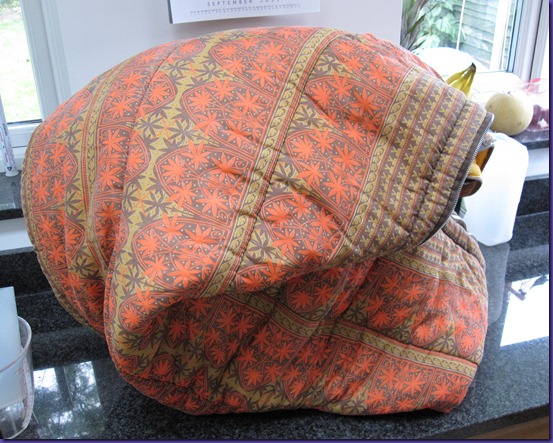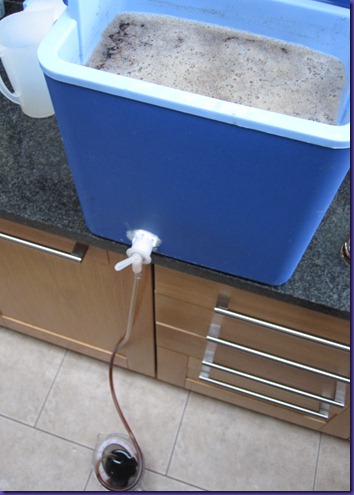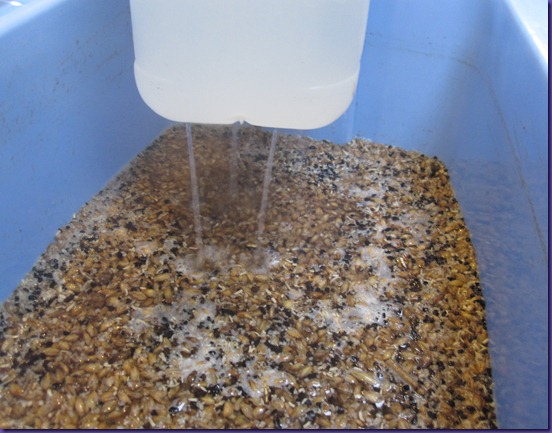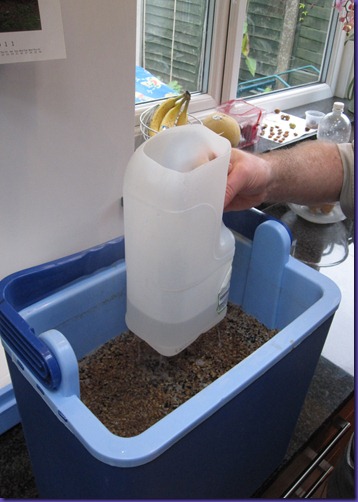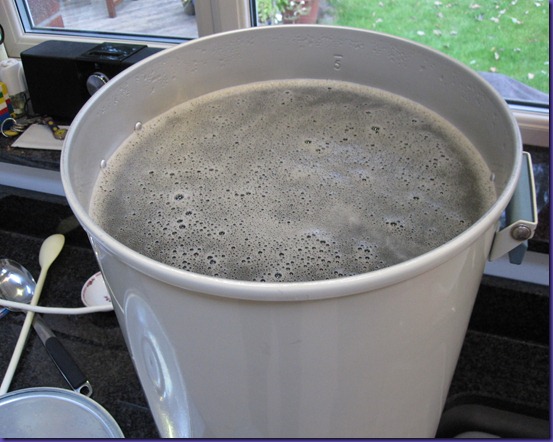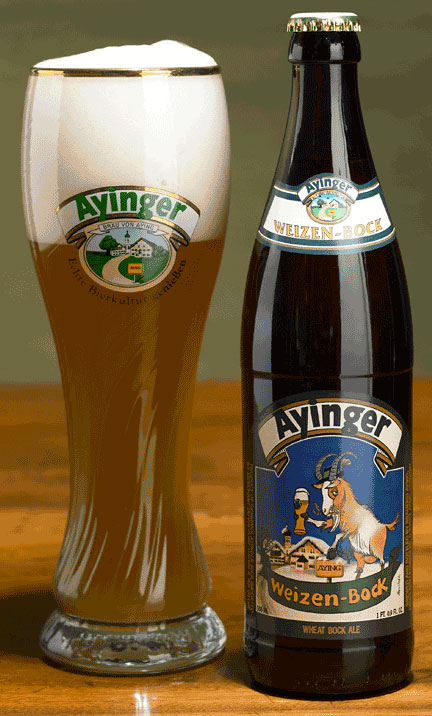The brewing process has about four major stages:
- Mix the malted grain with hot water and hold it at about 66oC for about an hour – this allows the enzymes in the malt to convert the starches to fermentable sugars and is called mashing;
- Run the liquid off the “mash”, and run through more hot water to wash out all the remaining sugars. This is called sparging;
- Boil the “wort” with hops for an hour or so. This sterilises the wort, extracts bitterness from the hops and can develop some rich toasted flavours (the maillard reaction, as in cooking);
- Chill the wort, add yeast and ferment.
To perform the first step you need a “mash tun”, which is an insulated vessel in which you can hold the grain and water whilst the reactions take place, and which has a filter at the bottom so you can run off the liquid and leave the grain undisturbed – you don’t want to get particles from the grain into the beer because it will affect clarity.
The filter at the bottom of the mash tun is the tricky bit for home brewers – it’s not really a piece of equipment that you have hanging around in the kitchen. So before Andy and I could start all-grain brewing we had to make one.
You can buy fancy stainless steel mash tuns if you like, but a popular cheap option is to make (or buy) one from a cool box. I picked up the cheapest cool box I could (£12 from Tesco) and we set about attacking it with a drill.
As you can see, we drilled through the inner and outer plastic and fitted a plastic tap which we then sealed with food grade silicone sealant.
Then we took a regular piece of copper pipe and some corner and T-pieces:
We sawed slits in each piece of pipe to allow liquid to drain through. This fits together like this:
This then fits inside the cool box with the slits downwards:
That’s it really. We left all the pieces of pipe un-soldered to make them easier to take apart and wash. Also solder contains lead which we didn’t really want in our mash very much.
On brew day we fill the mash tun with the “strike water” – at about 75oC. We let this sit and warm the mash tun until it is down to about 72oC when we “mash in” – mix in the grain.
After a quick stir and check of the temperature (which should now be 66oC to 68oC depending on our recipe) we put on the lid, wrap it all in a special high tech lagging device (sleeping bag) and leave it for an hour.
After the hour we start running off the wort:
And then “sparging” (gently pouring hot water onto the top of the grain bed) using another very high tech device from the diary industry:
And there you have it – five gallons of wort ready for boiling:
